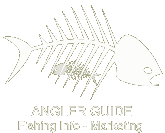 |  |
|
Navigation - Business - Great Lakes - Great Plains - Northeast - Northwest - Rocky Mountains - Southeast - Southwest - Technology - Trophy Catches
|
The goal of the Florida bass program is to produce trophy bass for Oklahoma anglers. To do so, genetically pure Florida bass are stocked into the state's lakes to influence the genetics of the native bass populations. Bass with Florida genes are able to grow larger more quickly than the native Northern largemouth bass. Except for one fish, every state-record bass since 1979 has been a Florida bass or a Florida hybrid bass. Oklahoma's current state record largemouth bass was caught in Cedar Lake in March 2013 and weighed 14 pounds, 13.7 ounces. "Oklahoma is really right on the line of where you can expect Florida bass to be successful," said Cliff Sager, south central region senior biologist. Sager continues to say, "Lakes in the southern half of Oklahoma have shown much greater success in sustaining Florida-strain bass. There's a reason Cedar Lake (in southeastern Oklahoma) has broken the state record two years in a row." Stocking sites are chosen by a committee of biologists based on many criteria. The committee considers the documented success in trophy bass production, as well as angler pressure. Also, lakes with better habitat for bass are more likely to be stocked than lakes where good bass habitat doesn't exist. Sager said growing trophy bass in a particular lake "is an eight- to 10-year investment." Therefore, the Wildlife Department concentrates on the waters that hold the most promise for producing trophy bass. All of the Florida bass that the Department stocks are spawned at the Durant hatchery. Most of the fish are raised there, but some of the fry are distributed to state hatcheries in Byron and Holdenville for raising. The state's fourth hatchery at Medicine Park gets involved by helping to deliver FLMB fry and fingerlings to the various lakes for stocking. This year's above-average production of FLMB can be credited to better spawning and improved handling techniques being used by hatchery technicians. Improved techniques have allowed record fish production the past two years, and Ike McKay, project leader at the Durant State Fish Hatchery, credits "the commitment and cooperation of everyone Sager said, "it truly is a coordinated effort to raise and stock that many fish over a short period of time and speaks to the dedication of the Wildlife Department to improve our fisheries resources."
Comments
«Back | News Home
| |||||||||||||||||||||||||||||||||||